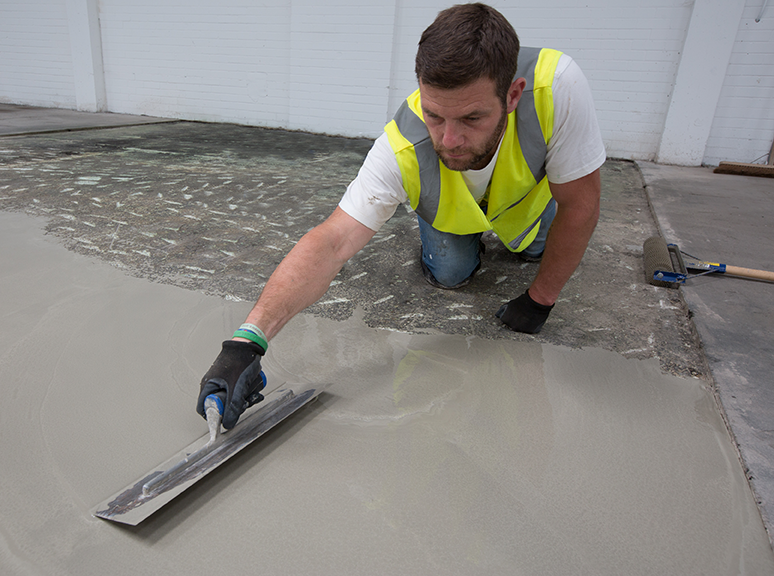Guide to Exterior Flooring Installations

The steps to achieving a professional flooring finish outdoors, including installing artificial grass, are much the same as when working indoors. Apart from involving floorcoverings that aren’t typically installed indoors, the products used must be formulated for outdoor use, as Neil Sanders, technical director at F. Ball and Co. Ltd., explains and offers product recommendations to achieve optimum results at each stage.
Exterior flooring installations typically involve working over concrete or sand/cement screeds. It’s also possible that the screed will be uneven or damaged, particularly if the project is a refurbishment. In most cases, a smoothing compound will be required to create a surface that is smooth and level for floorcoverings to be installed. The smoothing compound must be weatherproof and able to withstand extremes of temperature.
External Smoothing Compounds
Stopgap 850 is purpose-designed for external application, for example. It is suitable for smoothing screeds, including those that have become worn, impact damaged or weathered and can be used for patios, walkways, and balconies. Its resistance to water once fully cured also makes it ideal for use in locations such as garages.
If desired, the smoothing compound can be used as a stand-alone exterior wear coat, for example, over a garage floor. It is particularly suited to preparing surfaces for the installation of artificial grass or for use with vinyl or matting in transitional areas, such as entranceways. It can be applied in thicknesses between 5mm and 15mm, and, when fully cured, it is resistant to frost and rain.
Mixed with aggregate, Stopgap 850 can be filled up to 50mm for use where concrete or sand/cement screeds are particularly damaged or worn. Alternatively, contractors may opt for a ready-to-use repair mortar that is suitable for exterior floors to repair areas of damage, such as Stopgap 460, before applying the smoothing compound.
As always, it’s essential to prime the subfloor before the application of a smoothing compound. Priming absorbent subfloors of concrete or sand/cement screeds helps to promote adhesion and prevents the unacceptably rapid drying of subsequently applied smoothing compounds.
Adhesives for Exterior Flooring Installations
When using suitably water-resistant products, contractors can proceed straight to installing floorcoverings once the smoothing compound is fully cured. Again, it’s essential to choose an adhesive suitable for outside use.
Epoxy or polyurethane-based adhesives are the traditional choices for installing floorcoverings in outside areas. Such adhesives are tolerant of high temperatures, water and frost.
The latest advancements in adhesives technology have enabled F. Ball to create a one-part, moisture-curing adhesive for internal and external heavy-duty applications: Styccobond F73 PLUS.
The adhesive has been specially developed to provide the high bond strength required to hold a wide range of floorcoverings, including artificial grass, in place in the most demanding environments, such as in areas subject to surface water, heavy loads and high foot traffic, including in transition areas and entranceways. The adhesive offers high initial grab, and fibres in the adhesive limit early lateral movement during installation.
Styccobond F73 PLUS is also easier to apply and faster curing than traditional alternatives, requiring as little as 90 minutes to secure floorcoverings. The adhesive can be trowel-applied to a wide variety of sound, smooth subfloors, including concrete and sand/cement screeds. Its fast-setting properties allow welding of sheet floorcoverings to take place from as little as two hours.